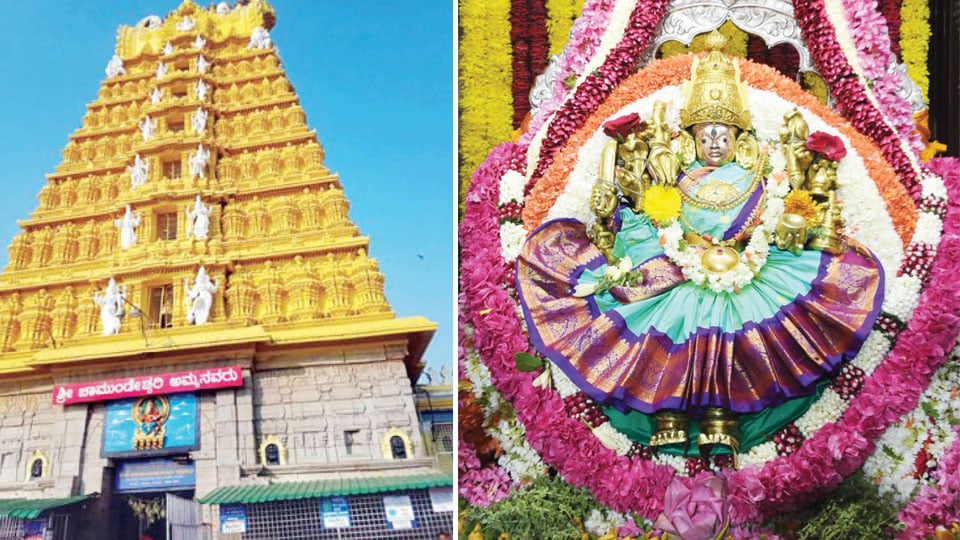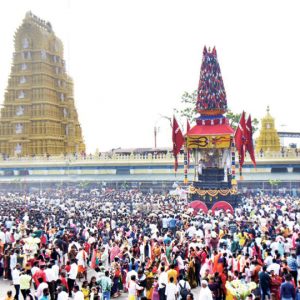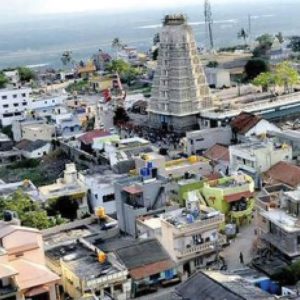By Dr. Devdutt Pattanaik – Author, Speaker, Illustrator, Mythologist
The Chamundeshwari Temple in Mysore used to receive a Salam Aarti, which is believed to have been instituted by Tipu Sultan. Now it has been renamed as the Namaskara Aarti, as part of the growing wave of anti-Muslim sentiment across the country. It’s tit-for-tat politics. In Pakistan, sari is seen as a Hindu outfit, so is frowned upon. In India, Urdu is seen as a Muslim language so needs to be changed.
This name shift serves as a reminder of another such change that took place in Karnataka nearly a thousand years ago, during a wave of anti-Jain movements when the Vaishnava and Lingayat communities opposed Jain practices. Many Jain temples were replaced by Hindu shrines. Historical records from five centuries, however, indicate that the Vijayanagar kings were clear in their stance to protect Jains and would not tolerate any violence against them by the worshippers of Vishnu and Shiva.
Before this conflict, in the 8th century AD, Karnataka’s Rashtrakuta dynasty patronised Jainism, and Amoghavarsha was renowned among the Arabs as a great king. During this time, vast amounts of wealth entered the Deccan region — gold flowed in alongside horses, which were prized possessions across India and Southeast Asia. This wealth was used to build magnificent temples, including the Jain Basadis. Among the many deities patronised by the Jains were local goddesses known as Yakshinis, who served as guardians of the main Jain deity, the Mulnayak Tirthankara. One of these Yakshinis was Jwalamalini, meaning “the one who has flames around her neck.” She was the guardian deity of Tirthankar Chandra Prabha. Interestingly, she was depicted holding multiple weapons and seated on a buffalo, making her strikingly similar to the Hindu goddess Chamunda, also known as Mahishasura Mardini, the slayer of the buffalo demon.
In fact, the city of Mysore derives its name from Mahishasura, although some claim it originates from Mhasoba, the buffalo god of the region, long before any formal religion of Jains or Brahmins existed. Jwalamalini’s consort is also depicted as a buffalo and named as Shyama, the dark one.
According to many Jains, the Chamundeshwari Temple was once dedicated to this Jain goddess before it was taken over by Hindus. Although it is now a Shakta shrine linked to a Shakti Peetha, no blood sacrifices are offered to the goddess herself. Instead, blood sacrifices are made at the base of the temple to a local deity, a practice maintained by the local community. Some believe that the temple’s Brahmin priests continue to follow old Jain traditions, while others argue that the local communities, who once sacrificed buffaloes to their deities, are now being sidelined.
It is well known that across Deccan regions, temples are dedicated to the seven virgin goddesses and their brother or son, Potraj. These deities are still worshipped by marginalised communities and are associated with childbirth and illnesses. Their rituals often demand the sacrifice of a male buffalo calf. Buffalo sacrifices during harvest season were once common, with the blood offered to the earth for fertility. It is believed that the goddess derives pleasure from this offering. This sacrifice regenerates the earth. These subaltern practices, once widespread across India, were shunned first by the Jains, later by Brahmins, and are now gradually being erased altogether.
In Hindu memory, however, the temple at Mysore is the site where Durga killed the Asura, Mahisha, who took many forms, the last being that of a buffalo. Images of Buffalo-killing goddess first appear in Kushan art, 2000 years ago, in North India.
Then they appear around 300 AD in Gupta rock cut caves of Udayagiri, Madhya Pradesh. But in the 8th century, the goddess was seen on rock cut caves and temples of Chalukya and Pallava kings, along with the seven-sisters. It is quite possible that these popular images of Hindu goddesses influenced Jain temples of South India as the Yaksha-Yakshini concept emerged in later Jain traditions, especially favoured by Karnataka’s Rashtrakuta kings. Or all of them were influenced by local tribes now forgotten.
No one can say for sure what came first and who influenced whom. The Chamundeshwari Temple exemplifies the complexities of a sacred site in India full of many influences — subaltern (Mhasoba, Potraj), Jain (Jwalamalini-Shyama), Hindu (Chamunda-Mahisha), and Islamic (Salam-arti). Some survive, some are suppressed, some resurface in a new form.








Recent Comments